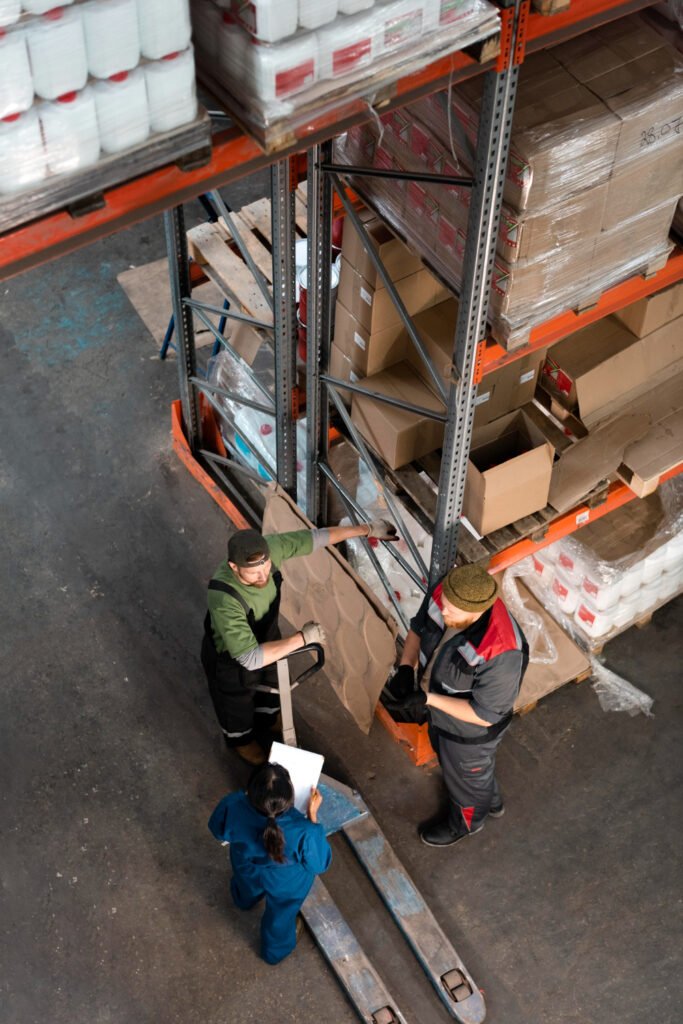
Loading bays are a core facet of goods-based industries. From over 300,000 retail businesses to the pharmaceutical sector, this country runs on the back of effective and efficient loading bays. Efficiency ensures productivity, cost-effectiveness, safety and ultimate customer satisfaction, but it’s not always the easiest thing to achieve.
This blog will offer insights into loading bay efficiency, so you can avoid bottlenecks, increased labour costs and accidents.
Quality loading bay equipment is vital
Loading bay equipment should be one of your top priorities when it comes to organising your workspace. Having the right tools will set you up for speedier operations, along with significantly reducing the risk of injuries and damages.
Some of the most important installations that every loading bay should invest in include:
- Dock levellers and leveller pits to facilitate seamless transitions between vehicles and loading bays
- External dock houses to increase the load-receiving capacity of the structure
- Dock shelters to offer protection from the elements to vehicles, warehouses and goods
- Accessories like dock pads, dock bumpers, dock lights, wheel guides, protection posts, control panels and traffic lights to enhance safety and efficiency
- Loading bay lifts for the receipt and delivery of potentially awkward loads
- Secure, high-speed loading bay doors for smooth passage and protection from criminals
- Vehicle restraints to maximise stability
Having the right equipment in place will make a huge difference to your overall efficiency.
Loading bay scheduling and communication
It’s important to build strong channels of communication and airtight schedules for your daily operations. Tools and techniques for ensuring that you can do so include:
- A full Warehouse Management System
- Dock scheduling software for clear bookings
- Setting up team by team communication schemes
- Clear signage and light communication for drivers
- Implementation of Advanced Shipping Notices (ASNs)
- Load planning with tools and mapping
With over 12,000 community pharmacies in the UK, along with thousands of other goods-handling businesses, many companies share warehouse space. This means the day-to-day can often be different and complicated. Having a dedicated schedule and internal communication scheme means you can keep your side of the street clean.
Setting up your warehouse layout and flow
You need to create a layout that’s conducive to efficiency, from the loading bay parking area to the inside of the warehouse. Be mindful of pinch points and high-congestion areas, reducing the need for unnecessary travel. It’s also important to consider safety when it comes to walking routes and warehouse vehicle traffic lanes to make sure there aren’t any unnecessary jams. It’s also vital to stage areas for both unloaded goods and prepared loads, keeping clutter at bay and allowing for immediate loading/unloading.
Loading bay rules for safety and training
Rules for loading bays are essential for maintaining safe operations and keeping your team well-trained. This minimises the risk of accidents while also helping to ensure that your business stays within the guidelines of the HSE and other regulatory bodies. It’s important to maintain concepts like:
- Standardised Operating Procedures (SOPs) for all tasks
- Clear visual cues across the warehouse and loading bay
- Proper lighting and visibility
- Continuous reviews and responsive training/feedback with refresher courses
- Proper PPE allocation and protocols
- Regular scheduled checks and routine inspections
- Addressing all issues immediately
- Upholding a culture of quality and cleanliness
These rules will help you to uphold the standard of efficiency that your loading bay needs to support a busy warehouse.
Constant improvement
None of these essential procedures are one-time fixes. You need to create a culture of constant review and improvement, leveraging data analytics to ensure that your efficiency stays ahead of the curve on industry standards. Being mindful of turnaround times, error rates and accident rates, among other KPIs will guarantee you operate efficiently moving forward.
Follow these guidelines for the essentials of loading bay efficiency, but make sure to continue research to ensure you’re as informed as possible.
